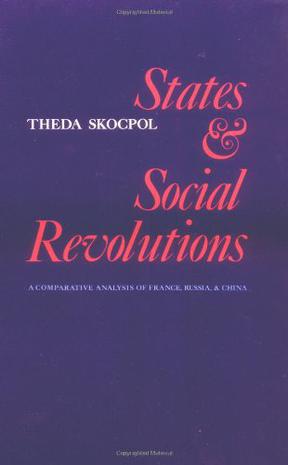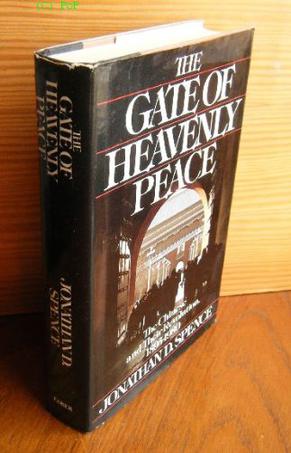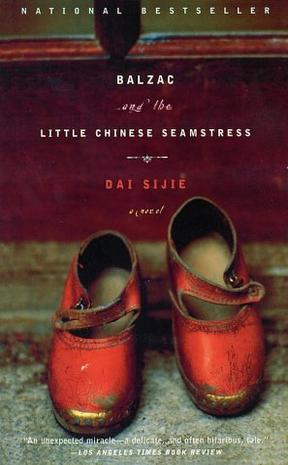欢迎来到相识电子书!
标签:revolution
-
States and Social Revolutions
This is a 1979 book by political scientist and sociologist Theda Skocpol, published by Cambridge University Press and explaining the causes of revolutions through the structural functionalism sociological paradigm comparative historical analysis of the French Revolution of 1787 through the early 19th century French Revolution, the Russian Revolution of 1917 through the 1930s Russian Revolution and the Chinese Revolution of 1911 through the 1960s Cultural Revolution. Skocpol argues that these three cases, despite being spread over a century and a half, are similar in the sense that all three were Social Revolutions Skocpol asserts that Social Revolutions are rapid and basic transformations of a society's state and class structures. This is different from, for example, a mere 'rebellion' which merely involves a revolt of subordinate classes but may not create structural change and from a Political Revolution that may change state structures but not social structures. Industrialization can transform social structure but not change the political structure. What is unique about Social Revolutions, she says, is that basic changes in social structure and political structure occur in a mutually reinforcing fashion and these changes occur through intense sociopolitical conflict. -
The Gate of Heavenly Peace
The Gate of Heavenly Peace guards the southern approach to the former imperial palace in the city that used to be called Peking. Until China's last dynasty fell in 1912, it was believed that through this gate ran the main axis of the Emperor's power. In the revolutionary decades that followed, it was a meeting place for political activists, students and workers, and after the Cultural Revolution, a place for the new leader, Chairman Mao, to review his Red Guards. In the late 1970s it became again a place of protest. The Gate of Heavenly Peace is thus at once a symbol of the aspirations of the Chinese people and an emblem of the state and its autocratic traditions. This astonishing tour-de-force of historical narrative looks at the Chinese and their long revolution through the eyes of the men and women who were most caught up in its development. But, uniquely, Jonathan Spence places the familiar careers of the political leaders like Mao and Chiang Kaishek at the edge of his story. Instead he explores his theme through the lives and writings of those who were most sensitive to the processes of violent revolution, the great writers, insurrectionists, historians and poets of twentieth-century China. Professor Spence's approach achieves the most unusual revelation. For the first time, the famous and extraordinary events of the last one hundred years --- the collapse of the nineteenth century empire, the first Chinese republic, the rise of the Guomindang, the Long March, the Communist triumph of 1949, and the Cultural Revolution --- are placed in the true context of Chinese life and literature. The unsung heroes and heroines of twentieth-century China are given their proper place in the story, and the great issues of modern Chinese history --- how should China modernise? what is the role of violence in a revolution against an authoritarian state? what are the first priorities for social justice? --- suddenly come alive with a richness and vitality that is lasting and unforgettable. The Gate of Heavenly Peace makes it possible for us to understand a people whose society is only now just beginning to surrender some of its most fascinating secrets. "A brilliant achievement" --- Professor John K. Fairbank "An extraordinary book" --- San Francisco Herald "A masterpiece of style and narration" --- Harold Bloom "An unforgettable book of historical recreation" --- Theodore H. White, The New Republic "Powerful and tremendously moving" --- American Historical Review "A rare poetic intensity ... a genre of its own" --- Marina Warner, New Statesman "Elegant, deceptively simple ... his combination of scholarship and artistry has produced a historical treasure" --- Philadelphia Inquirer -
Balzac and the Little Chinese Seamstress
In 1971 Mao's campaign against the intellectuals is at its height. Our narrator and his best friend, Luo, distinctly unintellectual but guilty of being the sons of doctors, have been sent to a remote mountain village to be 're-educated'. The kind of education that takes place among the peasants of Phoenix Mountain involves carting buckets of excrement up and down preciptous, foggy paths, but the two seventeen-year-olds have a violin and their sense of humour to keep them going. Further distraction is provided by the attractive daughter of the local tailor, possessor of a particularly fine pair of feet. Their true re-education starts, however, when they discover a comrade's hidden stash of classics of great nineteenth-century Western literature - Balzac, Dickens, Dumas, Tolstoy and others, in Chinese translation. They need all their ingenuity to get their hands on the forbidden books, but when they do their lives are turned upside down. And not only their lives; after listening to their dangerously seductive retellings of Balzac, the Little Seamstress will never be the same again.
热门标签
下载排行榜
- 1 梦的解析:最佳译本
- 2 李鸿章全传
- 3 淡定的智慧
- 4 心理操控术
- 5 哈佛口才课
- 6 俗世奇人
- 7 日瓦戈医生
- 8 笑死你的逻辑学
- 9 历史老师没教过的历史
- 10 1分钟和陌生人成为朋友



